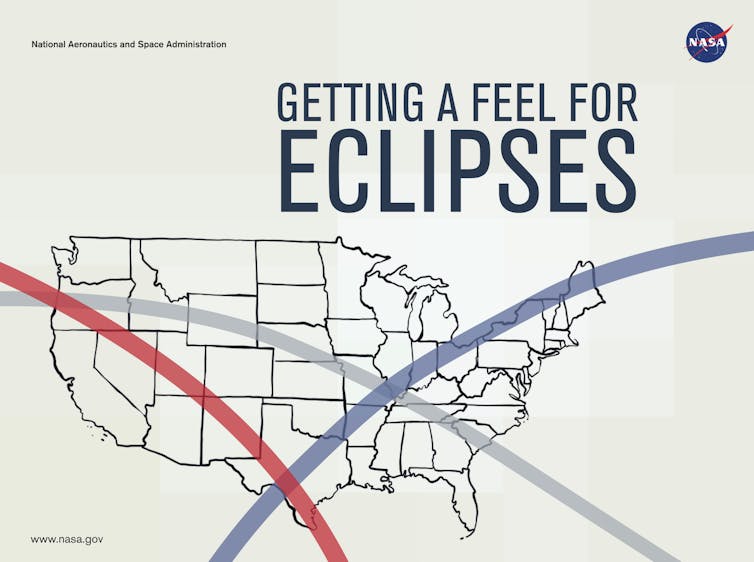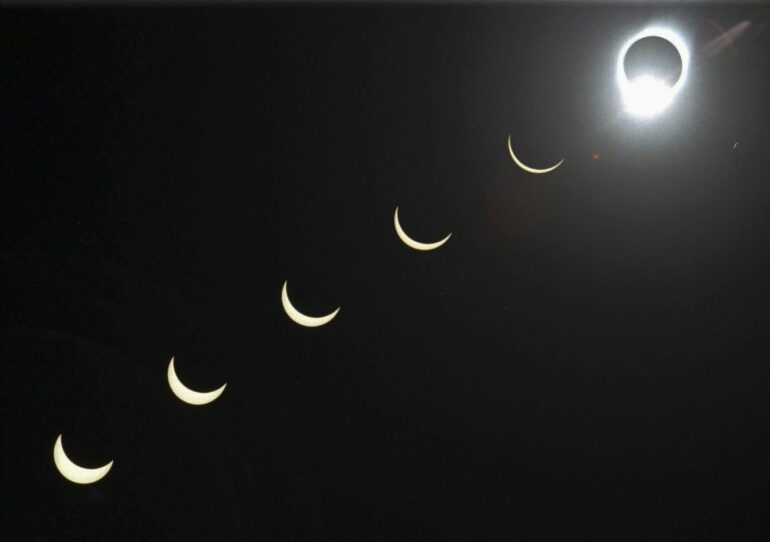Many people in the U.S. will have an opportunity to witness nearly four minutes of a total solar eclipse on Monday, April 8, 2024, as it moves from southern Texas to Maine. But in the U.S., over 7 million people are blind or visually impaired and may not be able to experience an eclipse the traditional way.
Of course they, like those with sight, will feel colder as the Sun’s light is shaded, and will hear the songs and sounds of birds and insects change as the light dims and brightens. But much of an eclipse is visual.
We are a planetary scientist and an astronomer who, with funding and support from NASA’s Solar System Exploration Research Virtual Institute, have created and published a set of tactile graphics, or graphics with raised and textured elements, on the 2024 total solar eclipse.
The guide, called “Getting a Feel for Eclipses,” illustrates the paths of the 2017 total, 2023 annular and 2024 total solar eclipses. In a total eclipse, the Moon fully blocks the Sun from Earth view, while during an annular eclipse, a narrow ring of sunlight can be seen encircling the Moon.
The tactile graphics and associated online content detail the specific alignment of the Earth, Moon and Sun under which eclipses occur.
To date, we have distributed almost 11,000 copies of this book to schools for the blind, state and local libraries, the Library of Congress and more.

‘The Getting A Feel for Eclipses’ guide helps blind and visually impaired people learn about the eclipse.
NASA SSERVI
Why publish a tactile book on eclipses?
NASA has lots of explanatory material that helps people visualize and understand rare phenomena like eclipses. But for people with visual impairments, maps and images don’t help. For tactile readers, their sense of touch is their vision. That’s where this guide and our other tactile books come in.
Over 65,000 students in the U.S. are blind or visually impaired. After working with several of our students who are totally blind, we wanted to find out how to make events like eclipses as powerful for these students as they are for us. We also wanted to help our students visualize and understand the concept of an eclipse.
These aims resulted in the three tactile graphics, which are physical sheets with textures and raised surfaces that can be interpreted through touch, as well as online content.
The first tactile graphic models the alignment of the Earth, Moon and Sun. The second illustrates the phases of an eclipse as the Moon moves in between the Earth and Sun to full totality, and then out of the way. The third includes a map of the continental U.S. that illustrates the paths of three eclipses: the Aug. 21, 2017, total eclipse, the Oct. 14, 2023, annular eclipse and the Apr. 8, 2024, total eclipse. We used different textures to illustrate these concepts.
Each book includes a QR code on the front cover, outlined by a raised square boundary. The code links to an…



